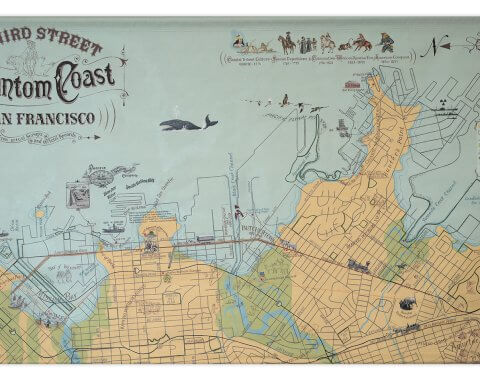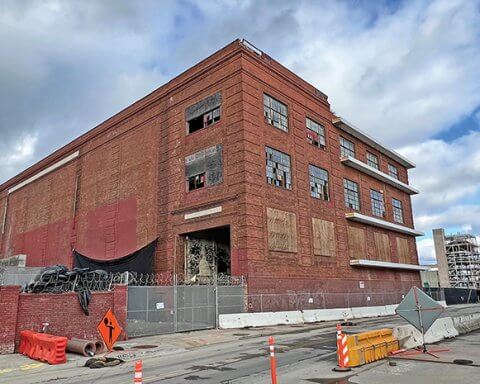This year the number of people completely without shelter dropped by 15 percent in San Francisco compared with 2019. The reduction in District 10 was even greater, according to the City’s Department of Homelessness and Supportive Housing (HSH).
Every two years, the U.S. Department of Housing and Urban Development (HUD) requires that communities that receive federal funding for homelessness services conduct a Point-in-Time (PIT) count of people without shelter. In 2019, there were 5,180 unsheltered people in San Francisco. In 2022, the unsheltered population dropped to 4,397, a decline HSH attributed to a significant increase in housing and shelter resources.
In District 10, the homeless population fell even more sharply, from 1,841 in 2019 to 1,115 in 2022, a 39 percent decrease.
“We are excited about all the projects that have opened/reopened in District 10,” an HSH spokesperson said. “We attribute the 39 percent reduction in unsheltered homelessness in this District to the multiple community-based organizations working hand in hand with other City departments and us. We are all neighbors and together we can make homelessness in San Francisco rare, brief, and one-time.”
HSH dedicated significant resources to Bayview-Hunters Point, to address equity issues in a previously marginalized neighborhood. A Stanford University research project found that government agencies historically dismissed community concerns about racial and environmental injustices as anecdotal, rather than empirical. Over the years, Bayview-Hunters Point has suffered from a loss of industry, poor infrastructure, and increases in violence, which have led to high rates of homelessness among Black people in the neighborhood.
The PIT report doesn’t identify ethnicity by neighborhood. Blacks represent 38 percent of San Francisco’s total homeless population while only making up 5.7 percent of inhabitants, according to the last U.S. Census Report.
In 2019, 8,035 individuals lacked permanent shelter in San Francisco; 5,180 were unsheltered and 2,855 were in shelters. In July 2020, Mayor London Breed unveiled a Homelessness Recovery Plan with the goal of getting 6,000 people off the streets within two years by creating more permanent housing and adding non-permanent beds. The City failed to reach its goal. By June 2022 only 4,679 previously unhoused individuals had been housed or sheltered.
Still, significant progress has been made in District 10. HSH made geographically-targeted investments in rental properties to provide permanent housing. It offered Emergency Housing Vouchers designed to lease units on the private market, with the Housing Authority covering a portion of rent based on income. San Francisco issued 906 vouchers, more than 40 percent of which were offered to people experiencing homelessness in Bayview-Hunters Point.
HSH opened the Vehicle Triage Center at Candlestick Point on January 21, 2022. The facility provides 135 parking spaces for 203 people. It has 24-hour security and staff onsite, as well as bathrooms, showers, and potable water. Residents have access to services like healthcare and assistance pursuing housing and employment opportunities.
The Bayview Navigation Center, which opened in January 2021, can accommodate more than 115 people. The Jennings Street Safe Sleep Village, located at 2111 Jennings Street, was one of the first formal tent encampments to commence during the pandemic; HSH took over management of it from the Covid Command Center on June 30, 2021. Currently, there’s capacity for 22 tents, with sanitation services and other resources.
HSH also re-opened the Central Waterfront Navigation Center in August, 2021. The low-barrier shelter has a maximum capacity of 64 people and focuses on connecting clients to housing.
This fall, the department is returning shelters and navigation centers to nearly pre-COVID capacity, including the Bayshore Navigation Center. Before COVID, the facility could accommodate 128 people. During the pandemic that dropped to 116.
Another resource that launched during the pandemic, Shelter-in-Place hotels, however, is winding down. The program will continue through the fall. HSH is matching individuals with long-term placements.
HSH credits its District 10 success to such organizations as the Bayview Hunters Point Foundation for Community Improvement, Bayview Hunters Point Multipurpose Senior Services and Bridge Housing, among others. These nonprofits conduct outreach to unhoused people, aid in case management, and support individuals in obtaining treatment, rehabilitation, and independent living skills.
Despite advances made by HSH through the pandemic, 7,754 people are presently without permanent housing, according to the PIT count. In December, HSH will publish a new Citywide strategic plan, with revised goals and a public dashboard to measure and report on progress in achieving them.



